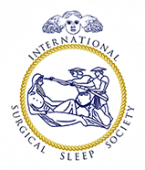Surgery For OSA
Your management is individualized. Everyone is made up differently, is bothered by different things and has different goals of treatment. No surgical procedure is exactly the same because of these differences.
The approach to children and adults is also different. This is because the underlying physiology and pathology in these two groups is different. In children with sleep breathing problems we will discuss the role of tonsillectomy and adenoidectomy and whether this is suitable for your child. Other factors contributing to sleep disturbance may need to be addressed, such as an unhealthy weight, teeth and jaw problems, hay fever and skeletal issues. These issues affect the airway structure or function.
In adults with sleep breathing problems, a thorough clinical evaluation will determine the nature and extent of the problem. Most patients will trial a mask at night. This is called CPAP (continuous positive airway pressure). This is the gold standard treatment which means that it is the very best treatment we have available for sleep breathing problems. It can potential completely cure it!
There are also second line treatments that I will recommend, such as a mandibular advancement splint. This is worn on your teeth at night. The goal is to jut your lower jaw forward to create space at the back of your mouth. This is achieved by gradually moving your lower jaw forward over time with the expertise of a specialist dentist. The splint needs to be made specially for you and I generally do not recommend the “boil and bite” products from the chemist or online for this. Some patients only have sleep breathing problems when lying on their back. Positional devices keep you off your back and are well tolerated.
The usual role of surgery is for patients who have not been able to tolerate CPAP or second line devices, those who need their airways opened in order to tolerate CPAP and occasionally as a first line option for those who have specific anatomical features. Surgery needs to be tailored to your anatomy and to the goals of treatment. All surgical procedures carry potential risks and complications and it is important that we balance these with the intended benefits to decide if this is the right option for you.






